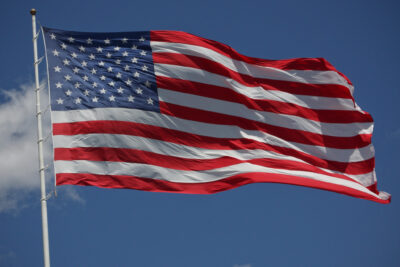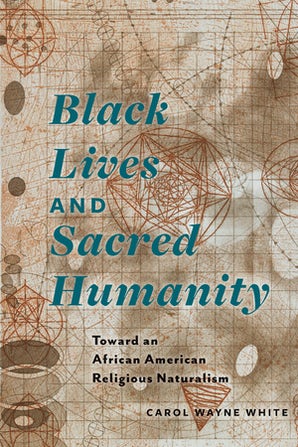I very much appreciate the scholarship of Jonathon Kahn and Mary Keller, so am particularly grateful for this opportunity to engage with each of them. In what follows, I respond to salient points from their respective essays in addressing one theme of this forum: how nature and natural processes are understood to mediate normative principles and ethical guidelines. I conclude with brief comments on their sense of where my book, Black Lives and Sacred Humanity, fits within a wider context of naturalist thought.
Religious naturalism, BLM, and justice for myriad nature
With different points of emphasis, Keller and Kahn address the timeliness of reading Black Lives during an unprecedented summer of BLM protests and pandemic disruptions to life in the United States and around the globe. In so doing, each respondent assesses the novel possibilities that emerge when I conjoin issues of naturalism with critical theories of social justice. I value their generous readings of Black Lives in this regard.
Kahn suggests that Black Lives presents a natural vision of justice that addresses various harms to myriad nature, including certain “racialized” human life forms, in new, radical ways. His appreciation in reading my volume during the 2020 summer pandemic brought into sharper focus a particular aim I had in writing the book: to honor a relational ontology within nature that helps us make better sense of intersectional analyses in approaching injustice of any shape or form.
My book seeks to undermine the binary of Black lives/all lives that many whites have voiced in opposition to the BLM movement; it also trespasses across such opposites as humanism/naturalism, poetry/science, African American religiosity/nature, and culture/nature. Consequently, I share Kahn’s sense of the limitations of the “capped tea kettle” metaphor when making crucial connections between the pandemic and BLM’s momentum and significance. As he wisely notes, the “capped tea kettle” model only comprehends the pandemic as a force that confines, failing to grapple with it “as a very particular and devastating natural occurrence.” Within this context, Kahn’s attention to Anna Julia Cooper’s radical notion of relationality at the turn of the century underscores why I chose her constellation of naturalist ideas as a particular historical narrative that anticipates the fuller richness of African American religious naturalism. Her work honors the nexus of relations that constitute myriad nature.
Keller recognizes that the concept of sacred humanity lying at the center of Black Lives advances a naturalized interpretation of Black religiosity’s focus on liberation, which has important ramifications for myriad nature. She states:
White identifies a will at work in African American religiosity: a human practice of making bodies sacred. The “I” of “I can’t breathe” is both particular to Black lives in their historic will to life and a universal, biotic, and connected nexus of sentient cognition and human recognition called sacred humanity.
I appreciate this keen insight from Keller, which attests to two inextricable dimensions in my naturalism that many readers tend to overlook: a particular historical, cultural-ethical task and a general eco-ethical one. Both are implicit in the sacred humanity idea, which reflects a mode of reflecting on, experiencing, and envisioning one’s relationality with all that is. It is only through an acceptance of one’s material, concrete embodiment and perceived relatedness that one begins envisioning (or is even challenged to think of) what might lie beyond one’s self-perceptions and thoughts.
In short, sacred humanity entails a distinct moral imagination that inspires social action between/among human agents, as well as humans’ transformative engagement with the more-than-human worlds that constitute our being here. (I draw all readers’ attention to the fuller ecological implications I discuss on page 123 of the book.)
Focus on materiality
My concept of sacred humanity reflects my commitment to a thoroughgoing naturalism that honors the relational materiality of existence. This materialist view of reality regards all existence as diverse forms and functions of matter; rather than being reductionist, this perspective is emergentist or expansionist in character. Accordingly, I resist any interpretive view of ethical normativity grounded in supernaturalism, metaphysical idealism, or in any isolated entity apart from the nexus of material processes. As Kahn observes:
On this account, sacredness comes neither from the saving power of a transcendent deity, nor is it located in an atemporal afterlife. The sacredness of African American religious naturalism ‘has to do with fundamental ways of conjoining with others that transforms us.’ Sacredness is a natural achievement, not a metaphysical given, that stems from realizing human entanglements, interwovenness, and mutual dependence. It takes the form of here-and-now poetic, political, and social expressions of those entanglements. And when it does break into view, it forms natural landscapes as grand and as capable of inspiring awe, wonder, and gratitude as the Grand Canyon.
Keller accentuates my commitment to such materiality when drawing attention to my evocation of Du Bois’s articulation of a new religious ideal in African-American religious history. I expand on this new religious perspective that resonates with what she calls “new materialist thought.” In further suggesting that one aim in my published work is to articulate “the positions from which people determine what is of ultimate value” or “religious valuations,” Keller surmises that my sacred humanity concept is one way for me to “pursue a genealogy of Black lives and the ecological interfaces of their coemergence with life on Earth.” This is a wonderful insight. As I aim to demonstrate, the sacred humanity concept is grounded in an empiricist epistemology, has ecological implications, and helps to enhance a distinctive type of humanistic strand in Black religious thinking.
I think Keller and Kahn homed in on a nascent idea in Black Lives whose fuller meaning became evident during our pandemic summer. In short, BLM’s recent attention to the violations against Black lives and its resistance to the forces of anti-Blackness become important points of departure — indeed evocations of a moral imagination—for comprehending and championing the value of all materiality.
Reflections on the wonders of naturalism
I found particularly exciting each respondent’s reflections on the affinities that Black Lives shares with other naturalist thought. Kahn’s discussion of Mark Cladis’s new work on radical Romanticism underscores my sense of the distinctiveness of Cooper’s brand of naturalism. This is her Black feminist slant on the Goethean-fused theme of “one and all” that was not fully represented in the works of other white male visionaries of her day. In mentioning Du Bois’s use of ecology in specific writings, and affirming that both he and Cooper looked to “nonhuman sites of the natural as a way to plumb the depths of American anti-Blackness and then ‘fire the imagination’ for a renewed vision of justice,” Kahn also accentuates the subtle richness of both thinkers’ naturalism.
Cladis’s interpretation of “wilderness” in this radical Romantic tradition appears to counter an influential conception featured in the writings, memorials, and diaries of white Puritans who contributed to a unique American narrative of civilization overcoming wilderness. As Roderick Nash argues, they battled “wild” country not only for personal survival, but also in the name of nation, race, and God, as civilizing the New World for them meant enlightening darkness, ordering chaos, and changing evil into good. Within the context of imperialist, colonial expansions, these historical perspectives and developments reveal troubling aspects of American environmental histories, and they contribute to the larger modernist project of “racializing nature” that Black Lives seeks to counter.
Keller augments these critical points when noting that this legacy of racializing natural processes has resulted in a violent, ghastly American narrative. Notably, she speaks of a historical trajectory of white bodies inheriting “stolen Indigenous lands” and “capital from the plunder of Black bodies.” Keller responds with a provocative idea of bringing the naturalism of Black Lives into closer proximity with the critical consciousness and political advocacy of tribalographies she identifies in LeAnne Howe’s work. While invigorated by the potential insights that may emerge, I am also concerned that my model of naturalism and Keller’s interpretation of some Indigenous writers’ naturalism may not be as harmoniously or easily synthesized. The following passage that Keller cites helps explains some of my caution:
We believe that all living things are spiritual beings. Spirits can be expressed as energy forms manifested in matter. A blade of grass is an energy form manifested in matter—grass matter. The spirit of the grass is that unseen force that produces the species of grass . . . We believe that man [sic] is real, a part of the Creation, and that his duty is to support life in conjunction with the other beings. That is why we call ourselves Onkwehón:we—Real People.
To articulate my concerns better, I turn to Keller’s discussion of my view of nature in the essay.
While observing that I do not define nature or the natural order in the book, Keller identifies one aspect of my usage of nature, referencing an “inherent force which directs either the world or human beings or both.” In this reading, it appears to me that Keller may be superimposing a metaphysical element that I reject in my naturalism. As I discuss on page 30 of the book, I follow religious naturalism’s contributions to thinking about the nature of “nature” by way of its “scientific views of nature.” As well, I present humans as complex organisms that have arisen by way of the emergence of natural systems. As such, humans are ultimately the manifestations of many interlocking systems—atomic, molecular, biochemical, anatomical, ecological—apart from which human existence is incomprehensible. Here, I am advancing a view of nature that builds on the work of Donald Crosby, a major religious naturalist, who states that nature requires no explanation beyond itself. In this view, nature always has existed and always will exist in some shape or form. As well, its constituents, principles, laws, and relations are the sole reality, which takes on new traits and possibilities as it evolves inexorably through time.
I thus wonder whether the explicit empiricism and materialism grounding my naturalism is epistemologically aligned with the Indigenous lexicon of “spirit,” “spiritual beings,” “Spirits as energy forms manifested in matter” that Keller designates. It would be helpful for me to hear more from Keller about important conceptual differences here. Notwithstanding similar cultural critiques and responses to a shared historical problem, there is also the very real possibility that two incommensurable views of matter and nature are present in Keller’s discussion.
Whatever lingering questions or unresolved tensions I might identify here, in the final analysis, I am very grateful to both Keller and Kahn for their thought-provoking essays.















Carol, Following our recent RNA Outreach Zoom meeting I became curious about the backgrounds of my fellow participants. Searching for information on our committee members has been quite eye-opening. It is a diverse and stimulating group. In the process I came across this article. I have read Kahn’s article and intend to read Keller’s as well.
Although I have yet to read Black Lives and Sacred Humanity I am drawn to the concept of sacred humanity. While I maintain that all of nature is sacred I think there is an argument for shining a spotlight on humanity as a special case. I feel this is particularly relevant when you discuss justice in naturalistic terms. For me, it comes down to the recognition that interdependence (relationally) is fundamental to the nature of existence and therefore is relevant to questions of justice.
I look forward to working with you in the RNA Outreach project.
Cheers, Terry Findlay